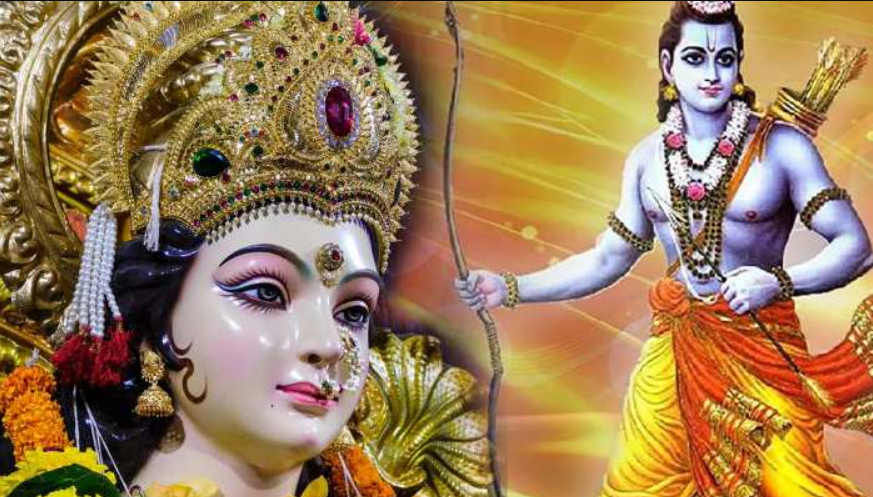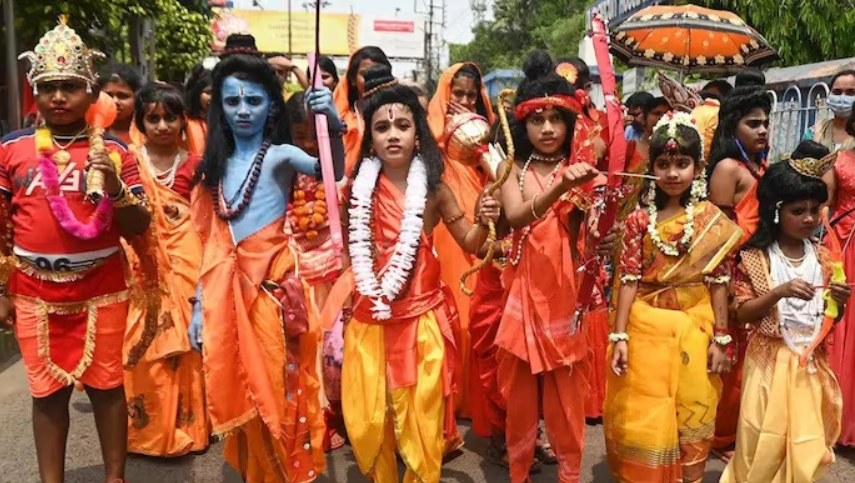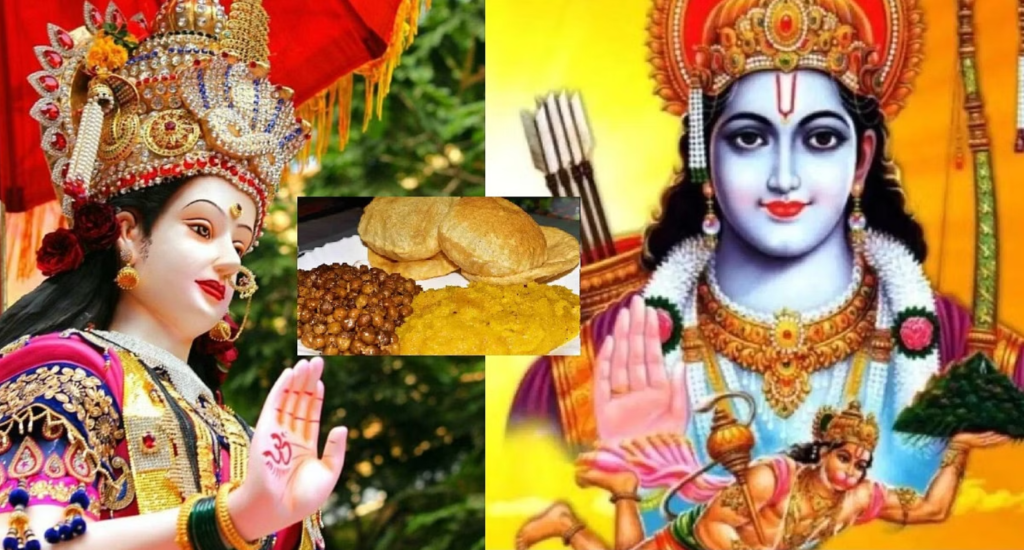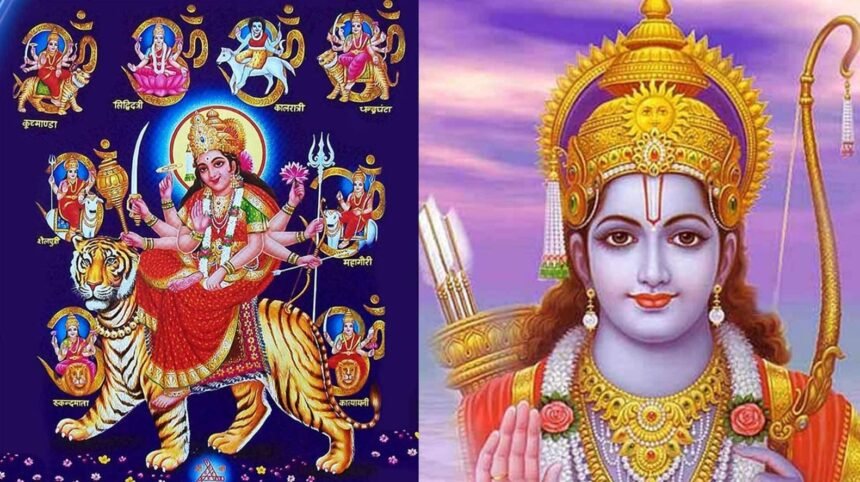Delve into the profound significance of Ram Navmi and Durga Navmi, a day of devotion and reverence. Explore importance of Ram Navmi vs Durga Navmi in Hindu culture and spirituality.
In the diverse landscape of Indian festivals, Ram Navmi and Durga Navmi shine as two radiant jewels. These celebrations are marked by profound religious significance, cultural diversity, and a shared fervor for the divine. While both festivals are celebrated with great enthusiasm, they diverge in their origins, customs, and rituals. Let’s explore the nuances that set the celebration of Ram Navmi and Durga Navmi apart.
Ram Navmi vs Durga Navmi

Ram Navmi vs Durga Navmi
ALSO READ: 9 Avatars Of Maa Durga: A Divine Journey Of Devotion
Ram Navmi: Honoring the Birth of Lord Rama
Origin and History
Ram Navmi, celebrated on the ninth day (Navmi) of Chaitra month, commemorates the birth of Lord Rama, an avatar of Lord Vishnu. The festival finds its roots in the ancient Indian epic, the Ramayana, which narrates the life and virtues of Lord Rama. It is believed that Lord Rama’s birth took place in Ayodhya, which is now a revered pilgrimage site.
Traditions and Customs
- Fasting and Prayer: Devotees often observe a fast on this day and visit temples to seek Lord Rama’s blessings. Special prayers and hymns are chanted, invoking the divine.
- Reading the Ramayana: Reciting or listening to the Ramayana is a common practice. It narrates the life journey of Lord Rama and imparts valuable life lessons.
- Rath Yatra: In some regions, a procession is organized, featuring idols of Lord Rama, his consort Sita, his loyal brother Lakshman, and the devoted Hanuman.
- Community Feasting: Sharing food with family and friends is a part of the celebration. Traditional sweets like ‘Panakam’ and ‘Neer Mor’ are prepared.
- Cultural Performances: Folk dances and dramas depicting scenes from the Ramayana are performed with great enthusiasm.

Ram Navmi vs Durga Navmi
Durga Navmi: The Triumph of Good over Evil
Origin and History
Durga Navmi, also known as Maha Navmi, is the ninth day of the Navratri festival, which honors the divine feminine energy in the form of Goddess Durga. This festival is celebrated with immense zeal and devotion, particularly in West Bengal.
Traditions and Customs
- Goddess Durga’s Worship: The highlight of Durga Navmi is the elaborate worship of Goddess Durga. Elaborate pandals (temporary temples) are set up, and beautifully adorned idols of the goddess are placed for public worship.
- Sindoor Khela: Women participate in the Sindoor Khela, where they apply vermilion to each other and the goddess as a symbol of marital bliss and protection.
- Dandiya and Garba: In Gujarat, Navratri is celebrated with energetic and vibrant Dandiya and Garba dances. It’s a time of social bonding and merriment.
- Ayudha Puja: In South India, people perform Ayudha Puja, where they worship tools, instruments, and vehicles, seeking divine blessings for success in their endeavors.
- Culmination with Vijayadashami: Durga Navmi leads to Vijayadashami, the tenth day, symbolizing the victory of good over evil when Goddess Durga defeats the demon Mahishasura.

Ram Navmi vs Durga Navmi
ALSO READ: The Significance Of Kanya Pujan On Durga Puja: A Timeless Tradition
Comparative Analysis
- Religious Significance: Ram Navmi is significant in the worship of Lord Rama, while Durga Navmi celebrates the divine feminine energy through Goddess Durga.
- Geographical Variations: Ram Navmi is celebrated across India, with a focus on North India. Durga Navmi, on the other hand, is more prominent in West Bengal, Gujarat, and South India.
- Customs and Rituals: While both festivals involve fasting, prayer, and community gatherings, the specific customs and rituals differ greatly. Durga Navmi places a strong emphasis on idol worship and cultural performances, whereas Ram Navmi centers around the Ramayana.
- Duration: Ram Navmi is a one-day celebration, while Durga Navmi marks the penultimate day of the nine-day Navratri festival.

Ram Navmi vs Durga Navmi
Both Ram Navmi and Durga Navmi offer unique and rich cultural experiences, uniting devotees in the spirit of faith and celebration. While the former revolves around Lord Rama’s life and teachings, the latter pays homage to the divine feminine power in the form of Goddess Durga. These festivals exemplify the beauty of India’s religious and cultural diversity.
Click here, to explore more latest post.
ALSO READ: 5 Countries Where Durga Puja Is Celebrated Other Than India
Image Source: Google




































